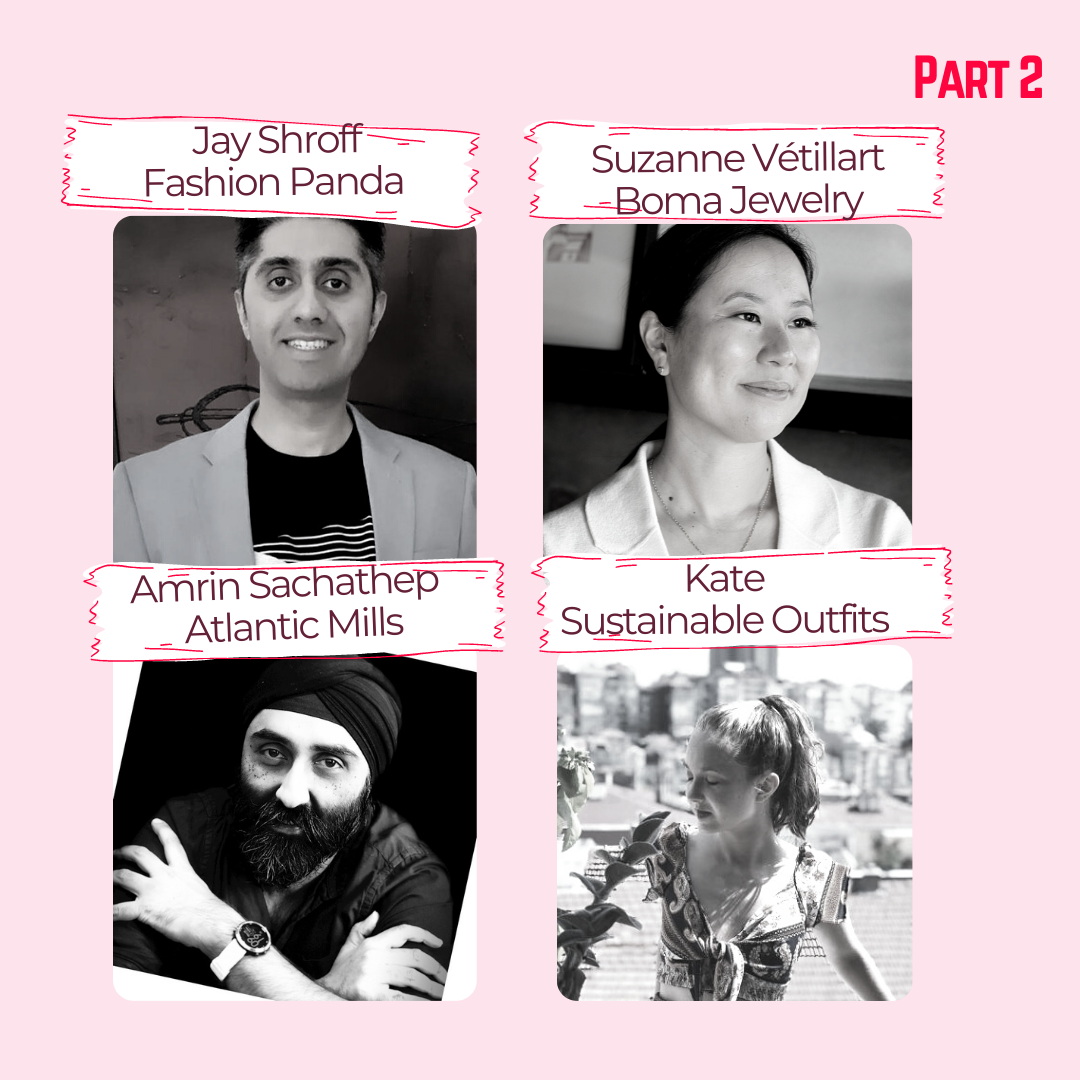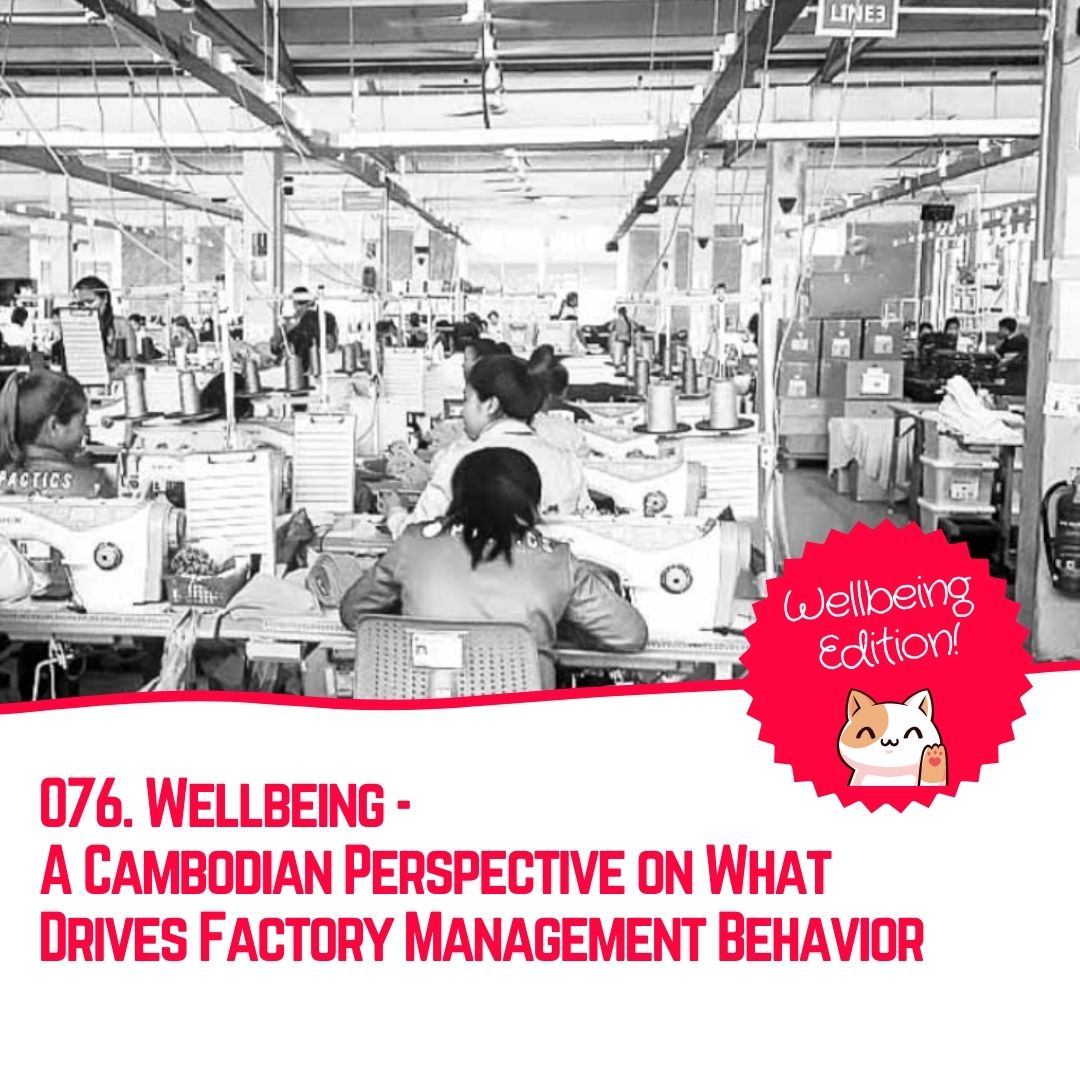Often, we have the impression that efficiency is all about how to push workers to go faster and faster. This can be true, but it’s also incomplete. In this episode we explore efficiency vs. sustainability with Operations Manager Chathu (Ambanpitiya Arachchige Chamara Chathuranga). Chathu has 25 years of frontline experience managing garment factories. We look at what productivity, volume and stable demand mean for suppliers and the employment of the workers.
First we will take a close look at how efficiency is defined, set and executed. Efficiency refers to the time each step takes within the production process. Managed responsibly, it can be an essential tool for equal partnership with production operators, from whom management can gain valuable and first-hand insight. It’s also about engineering the working environment to make it more human oriented, finding ways of reducing raw material waste, and reducing water and electricity usage. Whether efficiency is a tool of sustainability depends on how we approach it.
Second, we look at how the diverging interests between brands and suppliers can make them head in opposite directions, creating tension between efficiency and productivity. On the one hand, brands require competitive buying prices. An abundance of easily replaceable suppliers at a similar price and quality level is probably a welcome reality.
On the other hand, factories do their best to remain competitive and to be irreplaceable. Efficiency improvements can be a key tool for achieving this: faster means lower cost, more output, more capacity and being less replaceable. But the key to efficiency resulting in more productivity is stable demand.
Productivity can be defined as the amount of finished goods a factory produces divided by the number of people that it has. It is measured as output per labor hour. When a factory is dealing with unstable demand and low order volumes, the connection between efficiency and productivity can be inverted.
For example, if you have demand for only 1 shirt, and you break it into 20 steps and assign 20 people to make it. Each step was fast, but when the first person is doing that 1 small step, the rest 19 people just sit idle there waiting for the piece to be passed down. In this extreme example, being more efficient at each step does not equal more productivity. A better financial choice in this extreme situation would be to have only 1 person making the whole shirt, even though each step is not optimized (takes more time), and let the rest 19 people go home.
This example shows how important it is for the output rate to match market demand, otherwise the benefits earned from optimizing efficiency will be lost very quickly and the chances of it being done irresponsibly also increase. If stable demand is important for being able to deploy efficiency responsibly, and if it’s so important for factory management, what does that mean for the way we approach sustainability?
Chathu shares abundant technical details that help us define efficiency, productivity, volume and stable demand, and bring to life how those ideas connect to one and another, and affect sustainability goals.
Photo provided by Pactics
We strongly recommend reading two books, if your job involves communicating with manufacturers, or if you would like to be able to have more informed conversations with them about production.
The first is The Goal by Eil Goldratt, best known for introducing the theory of constraints. It's an easy, quick, engaging read. We promise, you won't fall asleep... and you'll be sure to impress your manufacturer colleague at your next meeting.
The second is The Toyota Way, an in-depth case study of Toyota and the principles of lean manufacturing the company developed. We know, it has nothing to do with garments. But we promise, you'll be much better positioned to talk to you manufacturing colleagues within the garment industry if you read this book!
Though we really encourage listeners to read both books, we know not everyone has time for that. This short video gives some very simple and easy to understand examples of the relationship between efficiency, productivity, and demand. Don't be put off by the technical words in the video title!
And this short video explores the quickest way to empty a bottle of water. Though it's a totally different context, it shows how important design and engineering is to efficiency and process optimization.
Photo Ksenia Chernaya (left), Wallace Chuck (right)

[et_pb_section fb_built=”1″ _builder_version=”4.4.7″][et_pb_row _builder_version=”4.4.7″ locked=”off”][et_pb_column type=”4_4″ _builder_version=”4.4.7″][et_pb_text _builder_version=”4.9.7″ text_text_color=”#424242″ text_font_size=”21px” text_letter_spacing=”1px” text_line_height=”1.4em” header_2_text_color=”#632036″] This is part two of the conversation between three manufacturers and...

We have some important changes coming: a new release schedule, new episode formats, and changes to the way we host the show. Tune in...

We can’t talk about wellbeing on the production floor without also talking about factory management. What drives the behavior of factory management? What are...